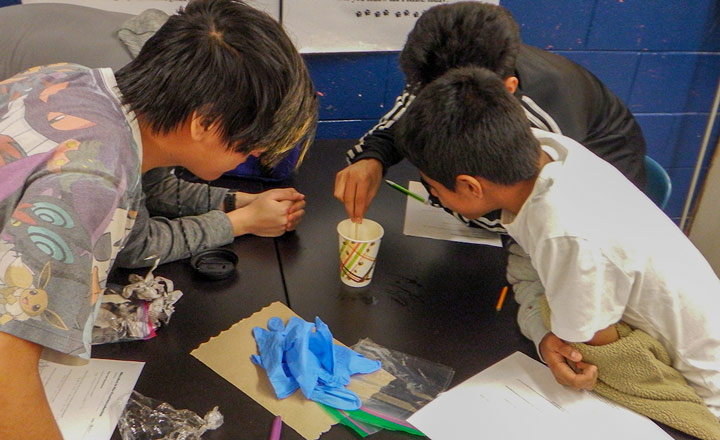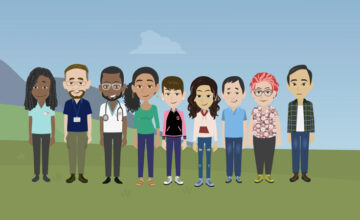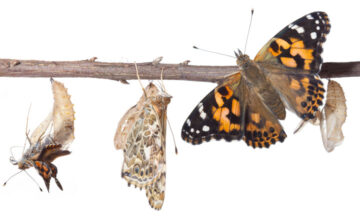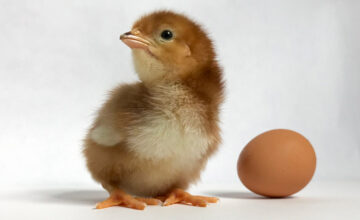
Introduction “Microbes on My Mind-A Middle School Perspective”
As you are reading this you have already come in contact with millions of microbes. Even though you cannot see them, they are all around you. This unit gives middle school participants an insight into just what those tiny microbes are and where they can be found.
In this unit, participants will discover the role microbes play in our bodies, our ecosystem, and our food. The activities provided will make it easy for the facilitator to explain the impact microorganisms have on humans in an interactive and engaging experience. These lessons are designed to encourage curiosity, resilience, and cooperation in our learners that will allow them to develop an understanding of the relationship between food safety, microbiology, and diseases, as well as the careers associated with microbiology. Participants will make connections between their existing knowledge of microorganisms, human health, and potential career paths related to this topic.
Through the activities in this unit, participants will deepen their understanding of microbes in history, where they can be found, how to prevent the spread of microbes on them and in their food, and how certain careers have advanced to provide a better understanding of microorganisms. Participants will walk away knowing that microbes are a part of their everyday life and that not all microbes are harmful, but some can also be beneficial.
Middle school participants will address some of the misconceptions surrounding microbiology and gain a better understanding of how important microbes are in our ecosystem. Participants will gain an understanding of the importance of food safety and the precautions that need to be taken to keep their bodies healthy and protected.
Age range: 11-15
Grade level: 6-8/Middle School
Lesson 1: The Microbes In You: An Introduction to Microbiology
North Carolina Essential Standards in Science:
- 8.L.1-Understand the hazards caused by agents of diseases that affect living organisms.
Next Generation Science Standards:
- MS-LS1-5-Construct a scientific explanation based on evidence for how environmental and genetic factors influence the growth of organisms.
Youth read a comic book and use microscopes to explore the human microbiome. Virtual components include:
- How to Use a Microscope Video with Worksheet
- Video links for learning about microbes in mouths
- Activities adapted for in school and at home virtual learning
- Activity Variations
- Kahoot!
- Quizlet
- Writing Prompt
Lesson 2: Microbes in History
North Carolina Essential Standards in Science:
- 8.L.1-Understand the hazards caused by agents of diseases that affect living organisms.
- Next Generation Science Standards:
- MS-LS1-5-Construct a scientific explanation based on evidence for how environmental and genetic factors influence the growth of organisms.
Youth model a disease outbreak. They explore the Black Plague and other historic pandemics to learn how microbes have shaped human history. Virtual components include:
- Geoinquiries from Esri
- Kahoot! Game
- Quizlet link
- Writing prompt
- Operation: Outbreak! Link from the CDC and the University of California
Lesson 3:Microbes in Our Food
North Carolina Essential Standards in Science:
- 8.L.2. Understand how biotechnology is used to affect living organisms. Summarize aspects of biotechnology including:
- Specific genetic information available
- Careers
- Economic benefits to North Carolina
- Ethical issues
- Implications for agriculture
Next Generation Science Standards:
- MS-LS1-1: Conduct an investigation to provide evidence that living things are made of cells; either one cell or many different numbers and types of cells
- MS-LS1-5: Construct a scientific explanation based on evidence for how environmental and genetic factors influence the growth of organisms
Youth make yogurt to learn about the role of bacteria in fermentation. Virtual components include:
- Variation – Playdough and Glitter to demonstrate how bacteria is spread
- Writing Prompt
- Kahoot!
- Quizlet
Lesson 4:Microbes in Our Water
North Carolina Essential Standards in Science:
- 8.L.1: Understand the hazards caused by agents of diseases that affect living organisms
- 8.L.2. Understand how biotechnology is used to affect living organisms. Summarize aspects of biotechnology including:
- Specific genetic information available
- Careers
- Economic benefits to North Carolina
- Ethical issues
- Implications for agriculture
Next Generation Science Standards
- MS-LS1-1: Conduct an investigation to provide evidence that living things are made of cells; either one cell or many different numbers and types of cells.
- MS-LS1-5: construct a scientific explanation based on evidence for how environmental and genetic factors influence the growth of organisms
Youth use microscopes to observe and identify microbes in local water samples. Virtual components include:
- Quizlet
- Writing Prompt
Lesson 5: Microbes All Around Us
North Carolina Essential Standards in Science:
- 8.L.1: Understand the hazards caused by agents of diseases that affect living organisms
- 8.L.2. Understand how biotechnology is used to affect living organisms. Summarize aspects of biotechnology including:
- Specific genetic information available
- Careers
- Economic benefits to North Carolina
- Ethical issues
- Implications for agriculture
Next Generation Science Standards:
- MS-LS1-1: Conduct an investigation to provide evidence that living things are made of cells; either one cell or many different numbers and types of cells.
- MS-LS1-5: construct a scientific explanation based on evidence for how environmental and genetic factors influence the growth of organisms
Youth sample microbes from high touch surfaces such as cell phones, doorknobs, and computer keyboards. They grow their samples on agar plates and compare the results to their predictions. Virtual components include:
- Writing Prompt
- Variations and Extensions
- Quizlet Link
Lesson 6: DNA Extraction Activity
North Carolina Essential Standards in Science:
- 8.L.2. Understand how biotechnology is used to affect living organisms. Summarize aspects of biotechnology including:
- Specific genetic information available
- Careers
- Economic benefits to North Carolina
- Ethical issues
- Implications for agriculture
Next Generation Science Standards:
- MS-LS1-1: Conduct an investigation to provide evidence that living things are made of cells; either one cell or many different numbers and types of cells
- MS-LS1-5: Construct a scientific explanation based on evidence for how environmental and genetic factors influence the growth of organisms
Youth extract DNA from fruit using everyday items. Virtual components include:
- Quizlet
- Variations and Extensions
- Writing Prompts




